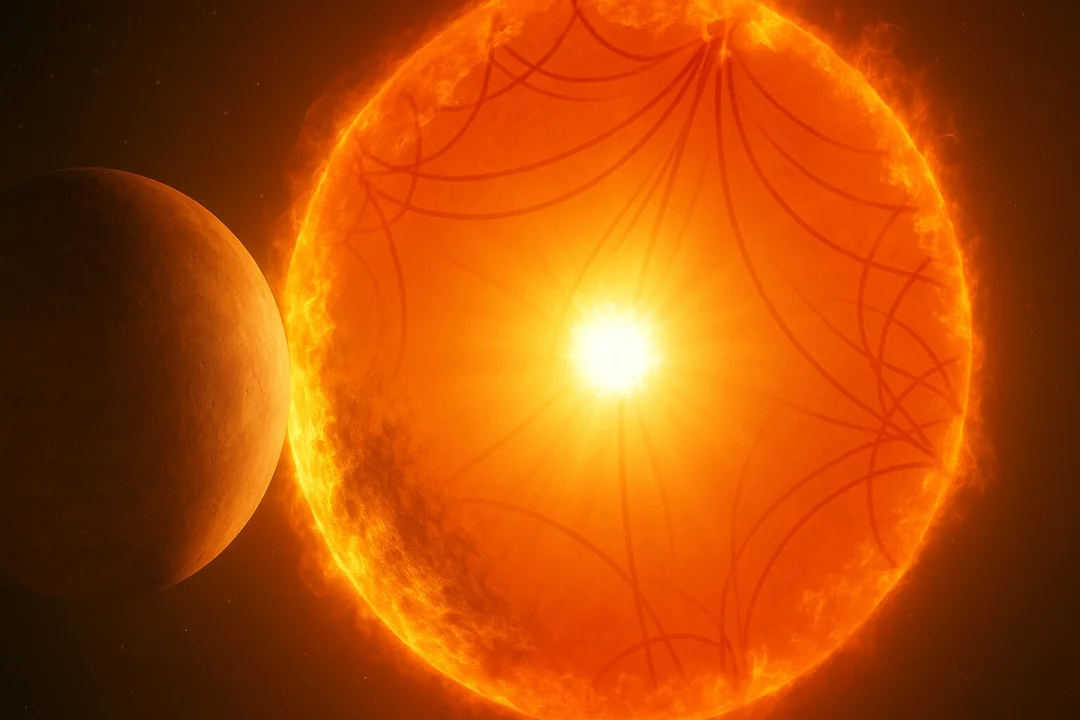
Astronomers Discover “Stellar Symphony” from Nearby Star, Shaking Up Current Stellar Evolution Theories
Our understanding of how stars evolve has been revolutionized by astronomers who have been studying the 'song' emanating from a nearby star. Located just 21 light-years away, the orange main sequence star HD 219134, much older than our sun, is providing key new insights into stellar aging.
The research, utilizing the cutting-edge Keck Planet Finder (KPF) instrument at the W. M. Keck Observatory in Hawaii, revealed the star's subtle oscillations. These oscillations act as a 'tuning fork,' allowing astronomers to refine our understanding of how stars slow down over billions of years.

"The vibrations of a star are like its unique song," explains Yaguang Li, astronomer and lead author of the study. "By listening to those oscillations, we can precisely determine how massive a star is, how large it is and how old it is."
The team's findings, published in *The Astrophysical Journal*, mark a significant advancement in the field of asteroseismology. Unlike previous studies that focused on hotter stars using space telescopes like Kepler and TESS, this research successfully probed a cooler star whose 'stellar song' was too subtle for space-based instruments to detect.
By taking over 2,000 ultra-precise measurements of HD 219134's vibrations over four consecutive nights, the astronomers were able to determine its age and size with unprecedented accuracy. The findings revealed that HD 219134 is approximately 10.2 billion years old, more than twice the age of our sun! This makes it one of the oldest main-sequence stars ever dated using asteroseismology.
This discovery challenges existing models of stellar aging. Typically, astronomers estimate stellar ages based on their spin rates using gyrochronology. However, stars like HD 219134 experience a slowdown in their spin rate as they age, making it difficult to accurately determine their age using conventional methods. Finding the accurate age of HD 219134 has been likened to finding the "long-lost tuning fork for stellar clocks."

Adding to the surprise, the team also discovered that HD 219134 is smaller than previously thought. Earlier interferometry-based measurements suggested a radius approximately 4% larger, which is now being attributed to a potential flaw in old stellar size estimation. This discrepancy highlights the need to refine how we estimate the sizes of other stars.
Interestingly, HD 219134 hosts at least five planets, including two rocky, super-Earth-sized worlds. The newly refined star size measurements have allowed researchers to further confirm that these planets have a high Earth-like composition with solid, rocky surfaces.
As Dr. Daniel Huber, a co-author of the study, points out, "When we find life on another planet, we will want to know how old that life is. Listening to the sounds of its star will tell us the answer."
These findings herald a new era for asteroseismology. Using instruments like the Keck Planet Finder, astronomers will be able to study other stars like HD 219134, helping to unlock the secrets of stellar evolution and aiding in the search for habitable planets. What other secrets does the "stellar symphony" hold for the future of astronomy? Share your thoughts in the comments below!